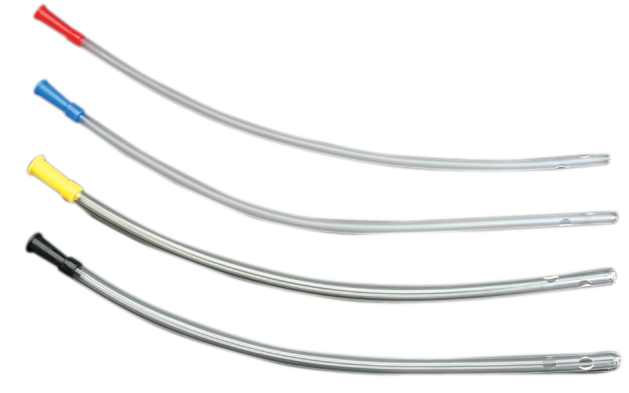
Rectal Tube
Rectal tubes are an invaluable tool in the healthcare profession. They come in many different sizes and are used for many different purposes - from catheterizing elderly patients to administering medicine, waste or fluids. Find out how to size a rectal tube in this article, as well as how to use one properly and safely.
Size: 6, 8, 10, 12, 14, 16, 18, 20,24, 26, 28, 30, 32, 34, 36,Fr/Ch. Length: 400mm o r 200mm.
There are many different types of rectal tubes, and the type you need will depend on your individual medical situation. Some common types of rectal tubes include:
-Foley catheters: These are the most common type of rectal tube, and they are typically used for people who have had surgery or who are unable to empty their bowels on their own. The Foley catheter is inserted into the rectum and then inflated, which allows it to stay in place and collect stool.
-Rectal catheters: These are similar to Foley catheters, but they are not inflated. They are typically used for people who have bowel incontinence or who need help emptying their bowels.
-Sigmoidoscopes: These are long, thin tubes that are inserted into the rectum and used to examine the lower part of the large intestine. They can also be used to take biopsies or remove polyps.
-Colonoscopes: These are similar to sigmoidoscopes, but they are longer so that they can reach the entire length of the large intestine. They are used to examine the entire colon for abnormalities or to take biopsies.
A rectal tube is a medical device that is inserted into the rectum in order to drainage or administration of fluids. It is a hollow, flexible tube with a rounded tip that is attached to a syringe or bag. Rectal tubes are typically used when a person cannot defecate on their own or when they are constipated. They can also be used to administer enemas, which are cleansing solutions that help to remove waste from the colon. When using a rectal tube, it is important to use the correct size for your body. The tube should be inserted slowly and carefully into the rectum, with the rounded tip facing upward. Once the tube is in place, the syringe or bag can be attached and the fluid will flow through the tube and into the rectum.
When it comes to sizing a rectal tube, there are a few things you need to take into consideration. The first is the size of the patient. The second is the type of procedure being performed. And the third is the patient's comfort level. Let's start with the first point, size. The size of the patient will dictate the size of the rectal tube. A larger patient will need a larger tube, while a smaller patient will need a smaller tube. It's important to get the size right, because if the tube is too small, it can cause discomfort and even pain for the patient. If the tube is too large, it can be difficult to insert and may cause bleeding. The second point to consider is the type of procedure being performed. Different procedures require different sized tubes. For example, a colonoscopy requires a larger tube than a rectal exam. Again, it's important to get the right size so that the procedure can be performed safely and comfortably for the patient. The third and final point to consider is comfort level. Some patients are more comfortable with a larger tube, while others prefer a smaller tube. It's important to talk to your patients about their comfort levels before choosing a rectal tube size.
Care and maintenance of a rectal tube is relatively simple. The most important thing to remember is to keep the area around the tube clean and free from infection. The skin around the anus should be cleaned with soap and water before each bowel movement. The balloon at the end of the rectal tube should be inflated with sterile water according to instructions from your healthcare provider. After each bowel movement, the outside of the rectal tube should be cleaned with soap and water. The tube should then be rinsed with sterile water and allowed to air dry. It is important to check the rectal tube regularly for leaks or cracks. If you notice any leaks, cracks, or other damage, contact your healthcare provider immediately as this could lead to infection.